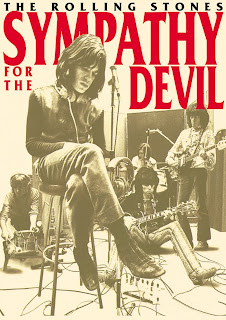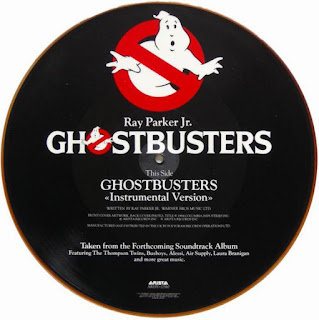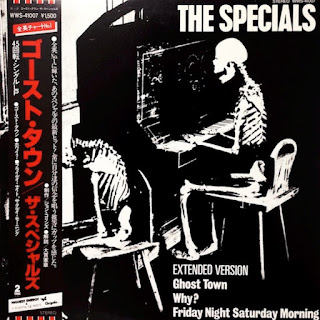ROLLING STONES - SYMPATHY FOR THE DEVIL
Publicació: 6 de desembre de 1968
Llistes: Regne Unit: #14 EUA: #97
"Sympathy for the Devil" és una cançó dels Rolling Stones escrita per Mick Jagger i acreditada a l'associació Jagger-Richards. És el tema d'obertura de l'àlbum de la banda de 1968 "Beggars Banquet". Jagger afirma que tracta sobre el costat fosc de l'home, no d'una celebració del satanisme. Aquesta sinistra cançó va perpetuar la imatge dels Stones com a nois dolents i aterridors.
El títol provisional de la cançó era "The Devil Is My Name", després d'haver estat anomenada d’inici "Fallen Angels". Jagger canta en primera persona com si fos el diable, que presumeix del seu paper en cadascuna de les diverses atrocitats històriques citades, i demana repetidament a l'oient que "guess my name” (endevina el meu nom). Jagger demana la cortesia de l'oient cap a ell, castigant implícitament els oients per la seva culpabilitat col·lectiva en els assassinats i crims enumerats.
La lletra es va inspirar en "El mestre i Margarita", un llibre de Mikhail Bulgakov. La cantant britànica Marianne Faithfull era la xicota de Mick Jagger en aquell moment i ella li va regalar el llibre. Al llibre, el diable és un gentleman sofisticat, un home de riquesa i gust. Els cors "whoo-whoo" es van afegir quan la núvia de Keith Richards, Anita Pallenberg, ho va fer durant una presa als assajos i als Stones els va agradar com sonava. Pallenberg la va cantar al disc juntament amb Richards, Brian Jones, Bill Wyman, Marianne Faithfull i Jimmy Miller.
Keith Richards va dir l'any 2002: "'Sympathy' és una cançó força engrescadora. Només és qüestió de mirar el Diable a la cara. Ell sempre hi és. He tingut un contacte molt proper amb Llucifer; l'he conegut diverses vegades. La gent malvada tendeix a enterrar-lo i espera que tot s'arregli i no aixequi el cap. "Sympathy For The Devil" és igual d'adequada ara, amb l'11-S. Aquí està de nou, és la seva gran època. Quan aquella cançó va ser escrita, va ser una època de convulsions.
Va ser el primer caos internacional des de la Segona Guerra Mundial. I la confusió no és l'aliat de la pau i l'amor. Vols pensar que el món és perfecte. Tothom queda absorbit per això. I com Amèrica ha descobert amb consternació, no us podeu amagar. També podeu acceptar el fet que el mal hi és i s’ha de tractar-lo de la manera que pugueu. “Sympathy for the Devil” és una cançó que diu: No ho facis. oblida'l. Si t'enfrontes an ell, llavors es queda sense feina".
Alguns dels esdeveniments històrics esmentats en aquesta cançó són la crucifixió de Crist, la Revolució Russa, la Segona Guerra Mundial i els assassinats dels Kennedy. Robert Kennedy va ser assassinat el 5 de juny de 1968, després que Mick Jagger comencés a escriure la cançó. La lletra original era "qui va matar Kennedy?" referint-se a l'assassinat de John F. Kennedy el 1963, però el va haver de canviar per "qui va matar els Kennedy?"
La cançó va adquirir un significat més fosc quan els Stones la van tocar al concert d'Altamont Speedway el 6 de desembre de 1969, abans que un fan fos apunyalat mortalment per membres de la banda dels Hells Angels contractats per seguretat. A mesura que la tocaven, la multitud es va tornar més rebel; unes quantes cançons més tard, durant "Under My Thumb" es va produir l'apunyalament. Tot això està documentat a la pel·lícula "Gimme Shelter".
Carlos Santana pensava que els Stones estaven jugant amb foc en aquesta cançó. "No tinc cap simpatia pel diable", va dir en una entrevista a NME. "M'agrada el ritme de la cançó, però mai m'identifico amb la lletra. Jagger i Richards no saben realment fins a quin punt de què parlen. Si sabessin en què s'estan ficant quan canten aquesta cançó no ho farien. El diable no és el Pare Noel. És de veritat". Santana va ser un dels intèrprets del desafortunat concert d'Altamont, i no va permetre que res del seu metratge aparegués a la pel·lícula "Gimme Shelter".
ROLLING STONES - SYMPATHY FOR THE DEVIL
Released: December 6, 1968
Charted: UK: #14 US: #97
"Sympathy for the Devil" is a song by the Rolling Stones written by Mick Jagger and credited to the Jagger–Richards partnership. It is the opening track on the band's 1968 album “Beggars Banquet”. Jagger claims this is about the dark side of man, not a celebration of Satanism. This sinister song perpetuated the image of the Stones as frightening bad boys.
The working title of the song was "The Devil Is My Name", having earlier been called "Fallen Angels". Jagger sings in first person narrative as the devil, who boasts of his role in each of several historical atrocities and repeatedly asks the listener to "guess my name". The singer demands the listener's courtesy towards him, implicitly chastising the listeners for their collective culpability in the listed killings and crimes.
The lyrics were inspired by “The Master and Margarita”, a book by Mikhail Bulgakov. British singer Marianne Faithfull was Mick Jagger's girlfriend at the time and she gave him the book. In the book, the devil is a sophisticated socialite, a man of wealth and taste. The "whoo-whoo" backing vocals were added when Keith Richards' girlfriend, Anita Pallenberg, did it during a take and the Stones liked how it sounded. Pallenberg sang it on the record along with Richards, Brian Jones, Bill Wyman, Marianne Faithfull and Jimmy Miller.
Keith Richards said in 2002: "'Sympathy' is quite an uplifting song. It's just a matter of looking the Devil in the face. He's there all the time. I've had very close contact with Lucifer - I've met him several times. Evil - people tend to bury it and hope it sorts itself out and doesn't rear its ugly head. 'Sympathy For The Devil' is just as appropriate now, with 9/11. There it is again, big time. When that song was written, it was a time of turmoil. It was the first sort of international chaos since World War II. And confusion is not the ally of peace and love. You want to think the world is perfect. Everybody gets sucked into that. And as America has found out to its dismay, you can't hide. You might as well accept the fact that evil is there and deal with it any way you can. Sympathy for the Devil is a song that says, Don't forget him. If you confront him, then he's out of a job.”
Some of the historical events mentioned in this song are the crucifixion of Christ, the Russian Revolution, World War II, and the Kennedy assassinations. Robert Kennedy was killed on June 5, 1968, after Mick Jagger started writing the song. His original lyric was "who killed Kennedy?" referring to the 1963 John F. Kennedy assassination, but he changed it to "who killed the Kennedys?"
The song took on a darker meaning when The Stones played it at their Altamont Speedway concert on December 6, 1969, before a fan was fatally stabbed by Hells Angels gang members hired for security. As they played it, the crowd got more unruly; a few songs later, during "Under My Thumb" the stabbing occurred. This is all documented in the film “Gimme Shelter”.
Carlos Santana thought The Stones were playing with fire on this song. "I don't have no sympathy for the devil," he said in an NME interview. "I like the beat of the song but I never identify with the lyric. Jagger and Richards don't really know the full extent of what they're talking about. If they knew what they were getting into when they sing that song they would not be doing it. The devil is not Santa Claus. He's for real." Santana was one of the performers at the ill-fated Altamont concert, and he didn't allow any of their footage into the “Gimme Shelter” film.































